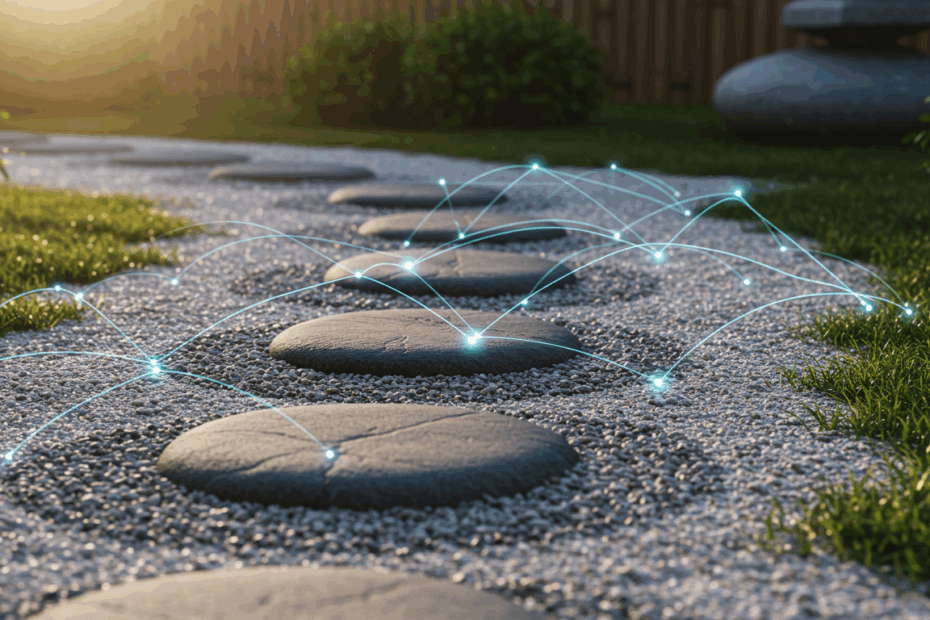Beyond Words: Unpacking the Lifestyle of Communication and Meaning
Say it like you mean it!
John: Welcome back to the blog, everyone. Today, Lila and I are tackling a topic that’s so fundamental to our existence, we often overlook its complexity and its profound impact on our lives. We’re not just talking about a skill, but a lifestyle: the pursuit of better communication and deeper meaning in our interactions. It’s the very fabric of our personal and professional worlds.
Lila: That sounds huge, John! When you say “lifestyle,” my mind goes to things like minimalism or digital nomadism. How can something as basic as talking to someone be a lifestyle? And where do we even begin to unpack a word like **COMMUNICATION**? It feels like trying to describe water while you’re swimming in it.
John: That’s an excellent analogy. We are indeed swimming in it. And that’s precisely why we need to be more conscious of it. To start, let’s ground ourselves in a clear definition. Many sources, from Merriam-Webster to the Oxford English Dictionary, converge on a core idea. At its heart, **COMMUNICATION** is fundamentally **a process by which information is exchanged between individuals through a common system of symbols, signs, or behavior**. It’s the essential bridge between one mind and another.
Lila: Okay, a bridge. I like that. So, it’s not just about one person talking *at* another. The word “exchanged” is doing a lot of heavy lifting there. It implies a two-way street, a give and take. So, me telling my cat he’s a good boy isn’t really communication unless he meows back in a way that I understand means “Yes, and I’d like some treats”?
John: Precisely. While you’re sending a message, true communication involves a shared understanding. The Cambridge Dictionary simplifies it further, defining it as **the act of communicating with people**. But my preferred definition, and the one that gets closer to the “meaning” part of our topic, comes from Britannica. They describe communication as **the exchange of meanings between individuals through a common system of symbols**. Notice the shift from “information” to “meanings.”
Lila: Information versus meaning. What’s the real difference there? Aren’t they the same thing? If I tell you “the sky is blue,” the information is that the sky is blue, and the meaning is… that the sky is blue. Right?
John: On the surface, yes. But let’s add context. Information is the raw data: “the sky is blue.” The meaning could be vastly different. If we’ve been waiting for a storm to pass so we can go for a hike, my saying “the sky is blue” carries a meaning of relief and excitement. If I say it to someone who is colorblind, the meaning is purely abstract. If I say it in a poem, it could be a metaphor for clarity or sadness. Information is the *what*; meaning is the *so what* and the *why*. Effective communication is about successfully transmitting both.
Lila: Ah, I see. So the lifestyle we’re talking about is being more intentional about not just sending data, but making sure the *meaning*—the real purpose and feeling behind our words—is what gets received. It’s **the activity or process of expressing ideas and feelings or of giving people information**, as the Oxford Learner’s Dictionaries puts it, with an emphasis on the “ideas and feelings” part.

John: Exactly. This brings us to the fundamental types of communication. We almost always think of words, but they’re only part of the story. Broadly, we can split communication into two categories: verbal and non-verbal.
Lila: Verbal is speaking and writing, and non-verbal is everything else, like body language? I feel like non-verbal is where a lot of that “meaning” you mentioned gets lost in translation, especially in our super-digital world of texts and emails.
John: You’re right on the money. Verbal communication uses words, whether spoken or written, to convey a message. It’s structured, using language, grammar, and syntax. It’s the most direct method we have for **exchanging ideas, thoughts, opinions, knowledge, and data**. When you write a report, give a speech, or send a simple text message, you are using verbal communication.
Lila: But it’s so easy to get wrong. I once sent a text to a friend saying, “That’s fine,” and they thought I was angry for hours. In my head, it meant, “That is genuinely fine with me.” But without my friendly tone of voice, it came across as passive-aggressive. The information was sent, but the meaning was a complete failure!
John: A perfect example of the power of non-verbal cues. Non-verbal communication includes tone of voice, facial expressions, posture, gestures, eye contact, and even the physical distance you keep from someone. It’s the unspoken dialogue that often reveals our true feelings. That “common system of symbols, signs, or behavior” we mentioned earlier isn’t just about language; it’s about a shared understanding of what a smile, a frown, or a shrug means in a given culture.
Lila: So when someone says, “I’m not upset,” but they have their arms crossed, their jaw is tight, and they’re refusing to make eye contact, you should probably believe the non-verbal signals over the verbal ones. The body is telling a more honest story.
John: In many cases, yes. Experts often suggest that when verbal and non-verbal signals clash, the non-verbal ones are more indicative of the person’s true state. This is because non-verbal cues are often subconscious. True mastery in communication, or living that lifestyle, involves learning to read these signals in others and, just as importantly, becoming aware of the signals you are sending yourself. It’s about ensuring your words and your body language are aligned to convey a single, clear meaning.
Lila: It’s like being a detective in every conversation! But what about the tools we use? We’ve mentioned texts and talking in person. Surely the method we choose to communicate with makes a big difference. It’s a whole different ball game trying to have a serious conversation over a patchy video call versus sitting across from someone in a quiet room.
John: It makes all the difference. This brings us to the modes and channels of communication. The Cambridge Dictionary offers a separate definition for the plural form, **COMMUNICATIONS**, as **the various methods of sending information between people and places, especially phones…**. This encompasses the entire infrastructure and the tools we use for the act of communicating.
Lila: So, **COMMUNICATION** is the act itself, and **COMMUNICATIONS** are the tools we use to do it? Like the internet, satellites, phone lines, and even the postal service?
John: A good way to think about it. The channel, or mode, is the medium through which a message travels. The primary modes are face-to-face, written, audio, visual, and digital. Each has its strengths and weaknesses. Face-to-face allows for the richest exchange because you get both verbal and a full spectrum of non-verbal cues in real-time. You see the smile, hear the sigh, and feel the energy in the room.
Lila: Which is why breaking up with someone via text message is considered so awful. You’re stripping away all the nuance, empathy, and respect that a face-to-face conversation would provide. You’re reducing a deeply meaningful human event to just a few lines of data on a screen.
John: Precisely. The medium itself carries a message. Written communication, like in letters or emails, is more formal and provides a permanent record. It allows you to carefully craft your message. However, as your “That’s fine” example showed, it lacks immediate feedback and non-verbal cues. Audio, like a phone call or podcast, brings back tone of voice but still lacks visual cues. And digital communication is a hybrid of all of these, from a simple tweet to an immersive video conference.
Lila: It feels like we have more ways to communicate than ever before, but we might be getting worse at it. We’re constantly **exchanging ideas, thoughts, opinions, knowledge, and data**, but are we achieving clarity? Are we actually connecting?
John: That is the central question. This leads us to a critical distinction: the difference between simply communicating and communicating *effectively*. Coursera defines effective communication as **the process of exchanging ideas, thoughts, opinions, knowledge, and data so that the message is received and understood with clarity**. The key word there is *clarity*.

Lila: So, effective communication isn’t just about sending the message; it’s about the receiver getting the *exact same* message you intended to send. No static, no confusion. What gets in the way of that? What causes communication to break down?
John: Communication theorists call it “noise.” Noise is anything that interferes with the message. It can be physical, like a loud construction site during a conversation or a bad internet connection on a video call. It can be psychological, like the receiver being distracted, biased, or in a bad mood. Or it can be semantic, which is when the words themselves are misunderstood. This can happen with jargon, complex language, or cultural differences in vocabulary.
Lila: I’ve definitely experienced semantic noise. In the US, if you say you’ll “table” a discussion, it means you’ll postpone it. But in the UK, it means you’ll bring it up for immediate discussion. Using that one word could lead to a complete breakdown in a business meeting if people aren’t aware of the different meanings. It’s a failure in **the exchange of meanings between individuals**.
John: An excellent, classic example. Overcoming this “noise” is the primary goal of effective communication. It requires the sender to be clear, concise, and mindful of their audience. And it requires the receiver to practice active listening—to focus, ask for clarification, and confirm their understanding. It’s not a passive act of just hearing sounds; it’s an active process of engagement.
Lila: So, to communicate effectively, it’s not enough to just talk. You have to constantly check in. “Does that make sense?” “What are your thoughts on that?” “Let me see if I understand you correctly, you’re saying that…” It sounds like a lot more work.
John: It is. But the cost of ineffective communication is far greater: mistakes, broken trust, failed projects, and damaged relationships. This is why the concept of **two-way communication** is so vital. It’s built into the very definition of the word “exchange.” One-way communication is a monologue—a speech, a memo, a traffic sign. It’s a broadcast. There is no mechanism for immediate feedback.
Lila: Like a professor giving a lecture to a hall of 300 students. They’re talking, but there’s not a real “exchange” happening in that moment. It’s just a data dump. It only becomes two-way communication when the Q&A session starts.
John: Exactly. Vonage, in a business context, defines two-way communication as the **exchange of information between a business and its customers, allowing both parties to send and receive messages in real-time**. We can apply this principle to all human interaction. It’s a continuous loop. The sender sends a message. The receiver receives it, interprets it, and then provides feedback, becoming the sender in the process. This feedback tells the original sender whether their message was understood correctly.
Lila: That feedback loop is everything! It’s how you steer a conversation and make sure you’re both on the same page. Without it, you’re just driving blind. You’re assuming your message landed perfectly, but you have no proof. It’s why texting can be so fraught with anxiety—the feedback loop is delayed and stripped of all the rich, non-verbal data.
John: Correct. A simple communication model includes these key components: the Sender (who encodes the message), the Message (the information and meaning), the Channel (the medium), the Receiver (who decodes the message), and Feedback (the receiver’s response). In a healthy, two-way conversation, these roles are constantly and rapidly switching back and forth. **The act or process of communicating; fact of being communicated** is only complete when that loop is closed, even for a moment.
Lila: It’s funny how we’re breaking it down so technically, but this is happening thousands of times a day for all of us without us even thinking about it. But I guess the “lifestyle” aspect is to start thinking about it. To be a more conscious participant in that loop. Is my message clear? Am I using the right channel? Am I really listening to the feedback, or am I just waiting for my turn to talk again?
John: That’s the core of it. And it brings us back to that crucial word: meaning. All of these elements—verbal cues, non-verbal signals, the choice of channel, the feedback loop—are in service of one ultimate goal: the creation of shared meaning. Information can be objective, but meaning is subjective and collaborative.
Lila: What do you mean by “collaborative”? I have my meaning, and you have yours. How do we collaborate on it?
John: Meaning isn’t something that one person just hands to another. It’s built together in the space between you. Your life experiences, culture, mood, and relationship with me all affect how you interpret my words. My experiences affect how I phrase them. When we communicate effectively, we work together to align our interpretations until we arrive at a shared understanding. We co-create meaning.
Lila: I can think of a time this went wrong for me while traveling. I was in a country where making intense, direct eye contact is a sign of aggression or challenge. Coming from a culture where it’s a sign of sincerity and confidence, I was trying to show respect to a shopkeeper, but I was actually making him incredibly uncomfortable. We were both sending and receiving messages, but our “common system of symbols” was not common at all. We failed to create shared meaning.
John: That’s a perfect illustration of the challenge. This is why empathy is perhaps the single most important skill in communication. Empathy is the ability to understand and share the feelings of another—to try to see the world from their perspective. It allows you to adjust your message and interpret their feedback more accurately. It’s the key that unlocks the door from simply exchanging information to truly sharing meaning.

Lila: So, how do we get there? How do we adopt this as a lifestyle? It feels like it requires a total rewiring of how we interact with everyone. It’s more than just a set of tips; it’s a philosophy.
John: It is a philosophy, and it starts with intention. Living the “Communication, Meaning” lifestyle is a conscious choice. It means entering every interaction with a goal of clarity and connection, not just transmission. It starts with self-awareness: understanding your own communication style, your biases, and the non-verbal signals you’re sending.
Lila: And it must involve a huge dose of curiosity, right? Being genuinely curious about the other person’s perspective, rather than just trying to win an argument or prove a point. Asking open-ended questions that can’t be answered with a simple “yes” or “no.” Questions like, “How did you arrive at that conclusion?” or “What does that look like from your perspective?”
John: Absolutely. Curiosity fuels the process. It also involves a commitment to active listening. This means putting away your phone, making eye contact, and giving the other person your full attention. It means listening not just to the words, but to the tone, the pauses, and the body language. It means summarizing what you’ve heard to confirm your understanding before you formulate your own response. It’s about making the other person feel heard and valued.
Lila: It’s also about choosing your channel wisely. Don’t try to have a difficult, emotional conversation over Slack. Don’t rely on email for urgent matters that require a dialogue. Match the medium to the message’s complexity and emotional weight. Acknowledge that **the various methods of sending information between people and places** are not all created equal.
John: And it’s about being brave enough to be clear. Sometimes we are intentionally vague to avoid conflict or to be polite, but this often creates more confusion in the long run. Clarity is kindness. This doesn’t mean being blunt or rude; it means being direct and honest while still being empathetic. It’s about finding the right words and checking that those words have been understood as intended.
Lila: So, to wrap it all up for someone reading this and wanting to start today… what’s the first step? It can feel overwhelming.
John: The first step is simple: pay attention. For the rest of today, just observe. Observe your own communication. In your next conversation, notice your posture. Notice your tone. Are you interrupting? Are you truly listening, or are you just waiting to speak? Notice the communication of others. What non-verbal cues are they sending? Is there a mismatch between their words and their actions? This act of observation is the first step toward intention.
Lila: I love that. It’s not about becoming a perfect communicator overnight. It’s about starting a practice, like mindfulness. The lifestyle isn’t about achieving a flawless state of communication; it’s about the ongoing, everyday **act of communicating with people** more consciously and kindly. It’s a journey of trying to close the gap between what you mean and what you say, and what they hear and what they understand. It’s the endless, beautiful, and necessary work of building bridges.
John: Well said, Lila. It’s the pursuit of moving beyond mere transmission toward true connection. It’s a commitment to **the exchange of meanings between individuals**, which is, at its core, one of the most fulfilling human experiences we can have. It is, without a doubt, a lifestyle worth cultivating.
